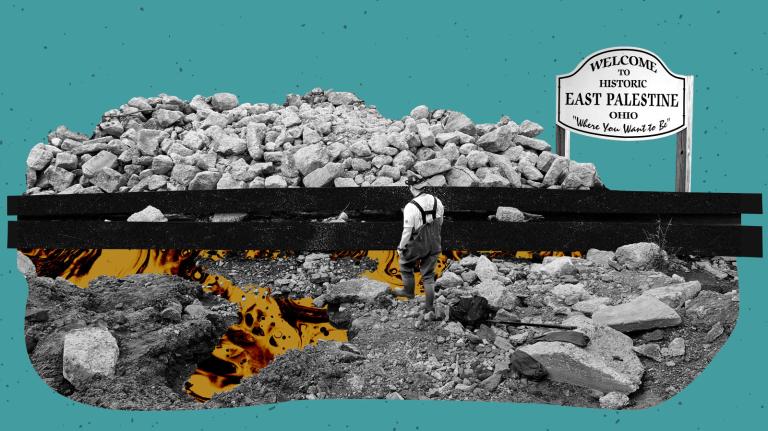On February 3, 2023, a freight train owned by Norfolk Southern carrying thousands of gallons of toxic chemicals derailed in the town of East Palestine, Ohio. For days, flames engulfed the rail cars, which contained highly hazardous materials, including vinyl chloride and butyl acrylate, used in the production of plastic. A thick, tall plume of black smoke billowed from the accident site and forced the evacuation of thousands of residents. Now, scientists say that traces of this pollution was found across 16 states, spanning 540,000 square miles from Wisconsin to Maine to South Carolina.
“Everybody expected a local contamination issue,” said David Gay, coordinator of the National Atmospheric Deposition Program at the University of Wisconsin-Madison and lead author of the new study. “But I think what most people don’t understand about this fire is how big it was and how wide-ranging the implications are.”
Gay and his colleagues tracked the pollution from the fire by testing rain and snow samples from approximately 260 sites across the country in the two weeks following the derailment. The analysis, published in the journal Environmental Research Letters, estimates that the fire in eastern Ohio impacted about 14 percent of U.S. land area and one-third of the country’s population, or 110 million people.
Across these areas, researchers recorded some of the highest soil pHs, or alkaline soil, and levels of chloride ions in the past decade following the fire in East Palestine. Gay said that the elevated measurements documented during the two-week spike, while certainly unusual, were not dangerous. “It was jumping out like a red light,” said Gay. “I never would have guessed it would have been in Wisconsin, no way in hell.”
“This study is unique and elegant as it clearly documents the impact that these kinds of accidents can have,” Juliane Beier, a leading expert on the effects of vinyl chloride at the University of Pittsburgh who was not involved in the study, told the Washington Post. “I think we should be concerned,” she continued, noting this isn’t the first time researchers have observed far-researching pollution from local disasters.
Of the 38 train cars that derailed in East Palestine, at least 11 were carrying highly toxic chemicals. To prevent a potential explosion, officials approved the controlled burn of five-cars worth of vinyl chloride, a colorless, flammable gas and known carcinogen.
East Palestine residents were allowed to come back home about a week later. On their return, there were reports of strong chemical odors pervading the town. Testing at nearby creeks and rivers revealed high levels of toxic compounds, including vinyl chloride and butyl acrylate. A year on, the environmental cleanup in and around East Palestine has already cost Norfolk Southern close to $800 million.
Gay recalls seeing a picture of the plume rising over East Palestine and poking through the clouds. “When I saw that, I was like, Oh yeah, this stuff’s going to go a long way,” he said.
When Gay and his colleagues began their research, they expected pollution in western New York, Pennsylvania, and Ohio. The reality, he said, was much more extensive. A low pressure system helped push pollution over parts of Michigan and Wisconsin. Pollution likely made its way into all the Great Lakes, except Lake Superior, he noted.
The most extreme measurements were recorded on the New York border with Canada, near the town of Fredonia — downwind and about an hour and half from East Palestine.
The researchers also found traces of the train derailment pollution as far south as Virginia and South Carolina. There’s a whole strip of the region, running from Illinois through Maryland, where it was too dry to collect pollution data. Even so, Gay maintains that chemical traces from the fire likely made their way to those areas too, just not through the rain or snow.
“This accident wasn’t just in Ohio,” said Gay. “It touched a lot of people.”




